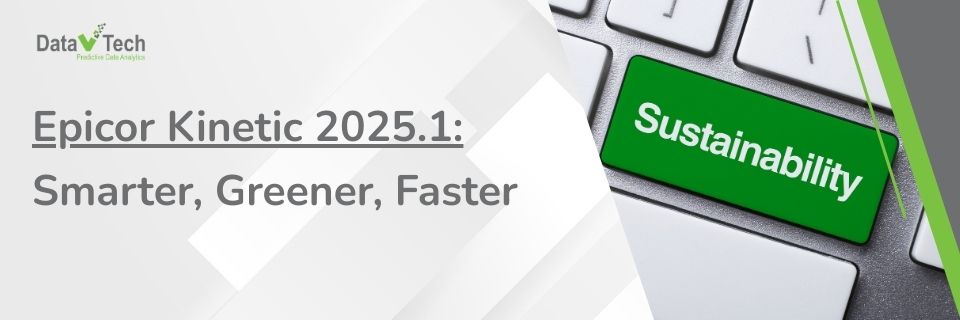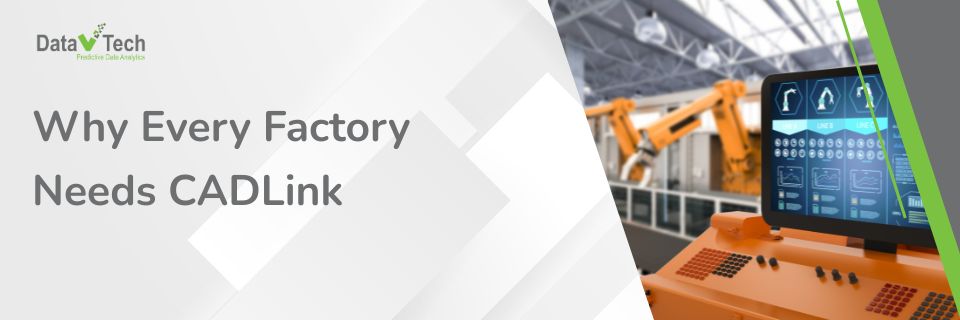03Oct
29Sep
The Ultimate Glossary of Planning and Scheduling Terms in Manufacturing (Without the Jargon Hangover)
This glossary covers the most important concepts in production planning and scheduling, including terms such as Forward/Backward Scheduling, Master Production Scheduling (MPS), JIT, WIP, Routing, and Demand Forecasting. Understanding these will help manufacturers streamline operations, optimize capacity, and ensure timely, cost-effective delivery of products.
22Sep
Epicor Kinetic 2025.1: Smarter, Greener, Faster — What Manufacturers Need to Know
Discover how Epicor Kinetic 2025.1 empowers manufacturers with advanced carbon tracking, smarter inventory & urgent MRP planning, enhanced warehouse control, and improved integrations to drive productivity, sustainability, and business growth.
15Sep
Unlock Smarter Manufacturing: What is CADLink and Why Every Factory Needs It
SCV (supply chain visibility) gives manufacturers real-time access to inventory, orders, logistics, and all stages of operations—from raw materials to customers. Integrating ERP, SCM, IoT, and analytics enables transparency, reduces risk, and increases overall efficiency. Data V Tech delivers SCV solutions that turn data into...
11Sep
Why Supply Chain Visibility (SCV) Is the New Black Box in Manufacturing
Supply chain visibility (SCV) gives manufacturers real-time access to inventory, orders, logistics, and production across every stage—from raw materials to customer delivery. By integrating ERP, SCM, IoT, and analytics, companies achieve full operational transparency, reduce risks, and increase efficiency. Data V Tech delivers tailored SCV...
08Sep
Revolutionize Your Manufacturing with Epicor Connected Process Control Track & Trace
Epicor CPC Track & Trace gives manufacturers the ultimate control over quality and compliance with real-time defect detection, flexible assembly tracking, and built-in image capture for root-cause analysis. Partnering with Data V Tech, you can turn traceability into a competitive edge—cutting waste, reducing recalls, and...
21Aug
AI-Powered Workflows: Streamlining Operations with Epicor
Epicor’s AI-powered workflows go beyond simple automation — they analyze, predict, and adapt in real time to eliminate bottlenecks, reduce errors, and optimize resources. From predictive updates to smart supply chain insights and an AI knowledge assistant, Epicor transforms clunky processes into intelligent, flexible systems....
18Aug
Real-Time Production Tracking: Why It Matters
Real-time production tracking with Epicor Kinetic gives manufacturers instant visibility into shop floor operations. From spotting bottlenecks and managing resources to delivering accurate customer updates, real-time insights help reduce costs, improve efficiency, and support data-driven decisions. With live dashboards, alerts, and drag-and-drop scheduling, Epicor turns...
11Aug
Can Your ERP Go Green? Epicor Thinks It Should.
In Southeast Asia’s fast-changing manufacturing landscape, sustainability, traceability, and regulatory compliance are no longer optional—they’re essential. Epicor ERP provides built-in tools for end-to-end traceability, automated ESG reporting, and multi-country compliance, helping manufacturers cut inefficiencies and stay audit-ready. With features like real-time IoT monitoring, configurable compliance...
08Aug










